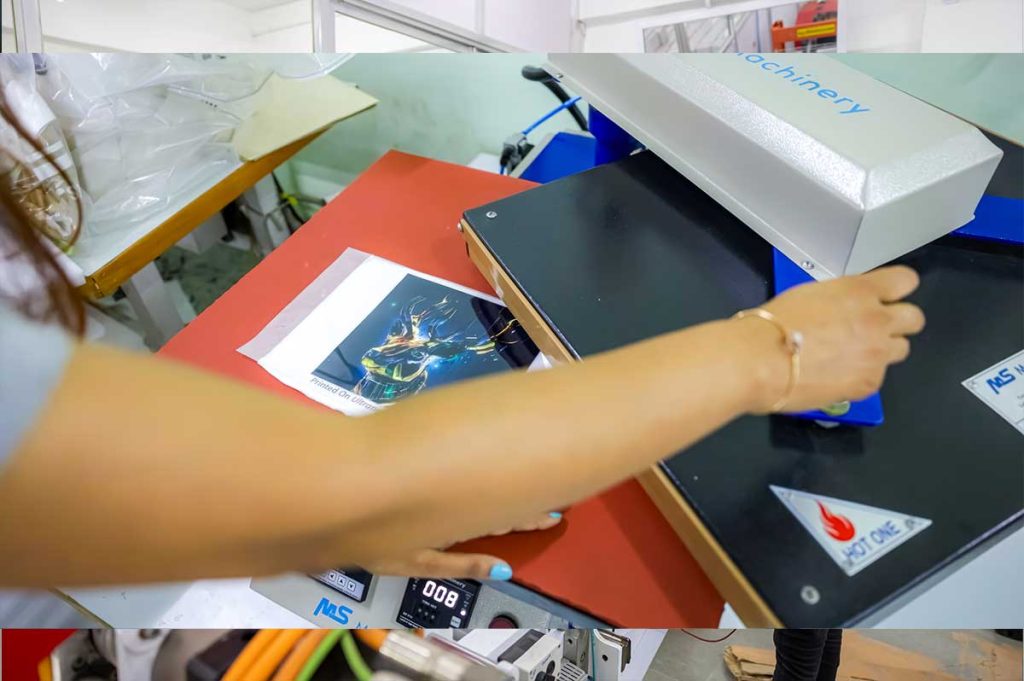How to use DTF Transfer Films ? – The Only Guide You’ll Need
Direct to Film (also known as DTF) is exactly what it sounds like. You print an artwork on a special film and transfer said film onto fabric or other textiles. In this blog we will teach you How to use DTF Transfer Films ? By following these tips you can Learn how to use DTF transfer film Step 1 – Print on Film You must print your CMYK down first, then your white layer afterwards (which is the opposite of direct-to-garment (DTG). This can be done easily with the Kothari Neo Rip software in one pass. Other softwares will require you to run the print twice to accomplish this. Step 2 – Apply Powder (Either Manually or with DTF Shaker Machine) Apply the powder uniformly while the print is still wet to ensure it sticks. Carefully shake off the excess powder so there’s no remaining other than the print. This is extremely important as this is the glue that holds the print to the fabric. If you have a dtf powder shaker machine, you’ll normally place your print, add the powder, and let the machine work its magic. Step 3.0 – Turn on and Adjust Air Purifier (Optional) Adjust your dtf air purifier so it’s above or near where the steam/ vapor comes out of from where the machine you’ll be curing from (either dtf curing oven, heat press, or dryer). Step 3.1 – Melt/ Cure the Powder Curing Oven: Place your print onto the curing oven with the temperature recommended by your curing oven manufacturer. Heat Press: Cure your newly powdered print by hovering with your heat press at 350 degrees Fahrenheit for 2 minutes. Step 4 – Transfer Now that the transfer print is cooked, you are ready to transfer it onto the garment. Use your heat press to transfer the print film at 284 degrees Fahrenheit for 15 seconds. Step 5 – Cold Peel/ Hot Peel Depending on what type of dtf transfer film you’re using, you will either have to wait until the print is completely cooled off or can peel off while it’s still hot before peeling the carrier sheet off the garment or fabric. Please read instructions of your specific dtf film. What is DTF Transfer Film – CLICK HERE Remember when use DTF Film transfer While direct to film printing is not positioned to overtake direct-to-garment (DTG) printing, this process can add an entirely new vertical to your business and production options. Through our own testing, we have found that using DTF printing for smaller designs (that are difficult with direct-to-garment printing) works best, such as neck labels, chest pocket prints, etc.If you own a direct-to-garment printer and are interested in DTF, you should definitely give it a try given its high upside potential and cost-effectiveness.
How to use DTF Transfer Films ? – The Only Guide You’ll Need Read More »








